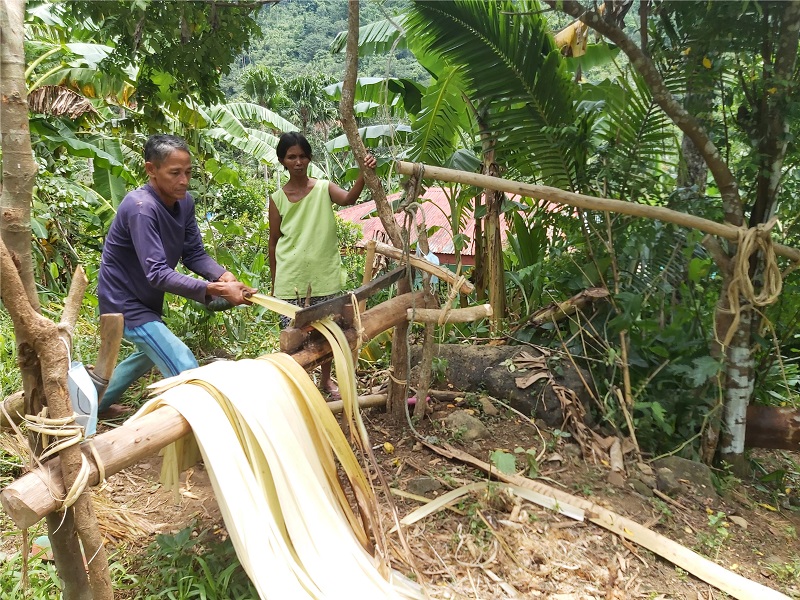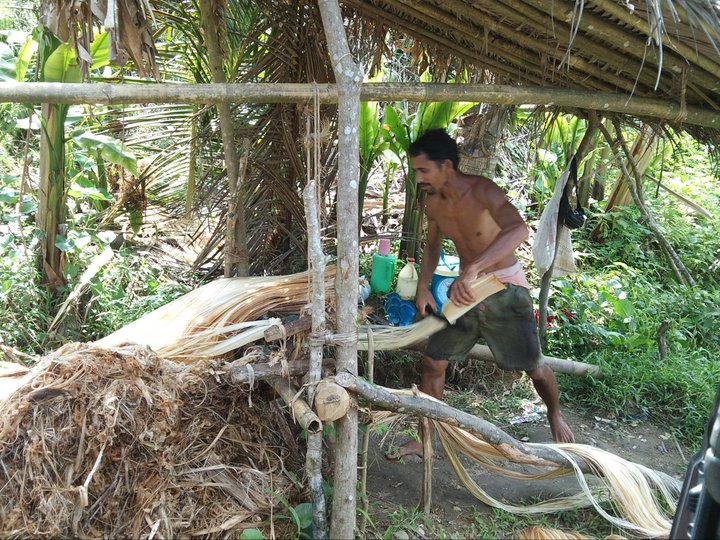
Method of Extraction - Hand Stripping
Hand stripping of abaca refers to the process of manually removing the fiber from the outer layer of the abaca plant. Abaca, is a species of banana native to the Philippines and is known for its strong, durable fiber that is used in the production of various products such as paper, ropes, and textiles.
Hand stripping involves carefully peeling off the abaca leaves one by one to expose the fiber strands underneath. The fiber strands are then extracted by hand and cleaned to remove any impurities. This method is considered to be more labor-intensive than mechanical extraction methods but can produce higher-quality fibers as it preserves the long, unbroken fibers of the plant.
Hand stripping of abaca is often practiced by small-scale farmers and artisans who specialize in producing high-quality abaca fibers for niche markets.
Hand Stripping of Abaca
- Ribboning - This method involves stripping the fiber off the abaca leaf in long, continuous strands, known as ribbons. The outer layer of the leaf is cut lengthwise and then peeled away, leaving the long fibers exposed. The fibers are then extracted by hand and cleaned.
- Whipping - This method involves stripping the fiber off the abaca leaf in shorter, smaller pieces, known as whips. The outer layer of the leaf is cut into small pieces, and the fiber is then whipped or beaten with a wooden stick to separate it from the plant. The fibers are then extracted by hand and cleaned.
Both ribboning and whipping methods of hand stripping require skilled labor and are time-consuming, which can make them more expensive compared to mechanical extraction methods. However, they can produce high-quality fibers that are prized for their strength and durability, making them popular among small-scale producers and artisans who specialize in producing high-quality abaca fibers.


